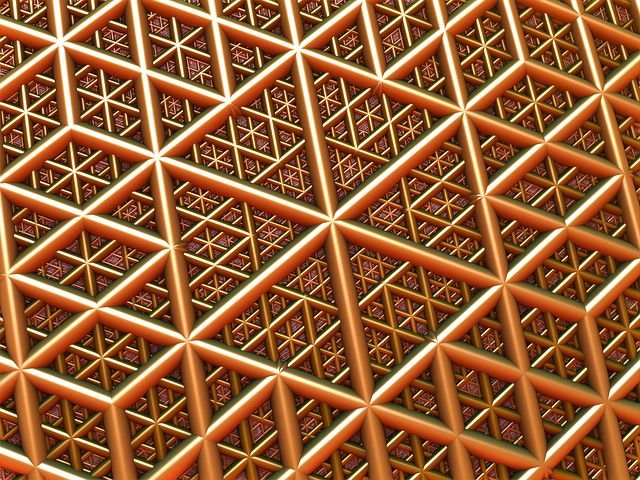
New technique for creating lightweight materials that are stiffer and stronger than previously possible.
Advances in materials engineering have led to the development of lightweight structures that are both strong and stiff, which are transforming aerospace, automotive and medical industries. Conventional manufacturing techniques like casting and machining, however, limit the designs that can be fabricated as they are prone to inaccuracies and struggle to achieve the best results.
Now, scientists at A*STAR have invented a method that uses additive manufacturing techniques to create lightweight lattice structures with greatly improved stiffness and strength1, paving the way for new materials for use in a wide range of applications including impact absorbent materials and sandwich structures.
The design and optimization of lightweight cellular and lattice structures is an emerging field made possible by advances in metal and polymer additive manufacturing, such as the ability to accurately print highly complex geometries.
By mimicking structures occurring in nature, Stephen Daynes and colleagues from A*STAR’s Singapore Institute of Manufacturing Technology have developed a method to create these new robust materials in collaboration with researchers from the National University of Singapore.
“Lattice structures exceed the structural performance of conventional solid materials for use in lightweight sandwich cores, medical implants and a new class of lattice-type metamaterials with specific mechanical and thermal properties,” explains Daynes. “Using a new biomimetic method, we were able to create cellular and lattice structures similar to those seen in bamboo and human bones.”
The researchers determined the principal lines of stress, called isostatic lines, in the lattice using a method that combines topology and size optimization. This approach allows the size, shape and orientation of each cell in the structure to be tailored, significantly reducing the stress between neighboring lattice cells.
The researchers compared the performance of their graded lattice structure with a uniform lattice core and found that their optimized design had increased stiffness by 172 per cent and strength by 100 per cent.
“Our technique can create lightweight, functionally graded lattices that greatly improve the stiffness and strength of additively manufactured sandwich structures without increasing their mass,” says Daynes. “These structures are particularly well suited to additive manufacturing processes since they are largely unconstrained by manufacturing complexity.”
“We plan to apply the methodology to three dimensional stress fields, where employing spatially graded lattices can lead to novel and more weight efficient materials,” says Daynes.
The A*STAR-affiliated researchers contributing to this research are from the Singapore Institute of Manufacturing Technology.
This article was first published by Springer Nature. Read the original article go to https://www.research.a-star.edu.sg/research/7853/nature-inspires-light-robust-lattice-structures.
For more muy writings check out my website at https://gluons2galaxies.com.
Hi! I am a robot. I just upvoted you! I found similar content that readers might be interested in:
https://techxplore.com/news/2018-03-technique-lightweight-materials-stiffer-stronger.html
Downvoting a post can decrease pending rewards and make it less visible. Common reasons:
Submit
A great example of Biomimicry in action! I love working with nature-based design because it allows us to use the knowledge of nature to co-create our world, rather than just impose our thinking. Super excited to be a part of this type of work!
Downvoting a post can decrease pending rewards and make it less visible. Common reasons:
Submit
I agree. It's a fascinating field, and we've only just scraped the surface of the potential of learning from nature. After all, she's had a long time to come up with solutions!
Downvoting a post can decrease pending rewards and make it less visible. Common reasons:
Submit
I have been working in biomimicry since last year, and I am constantly amazed by all the ways we can find nature-inspired solutions!
Downvoting a post can decrease pending rewards and make it less visible. Common reasons:
Submit